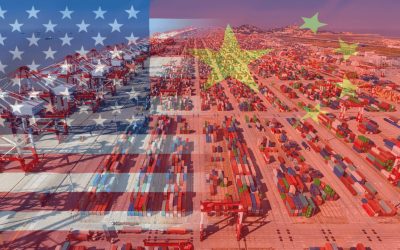Digital transformation is progressing in every business aspect, including trade and customs procedures. African, Asian, and Latin American countries are looking to replicate their European and American counterparts. However, not everything is what it seems.
Nowadays, service and data flows are known to play a far more significant role in linking the global economy than ever before. Services trade is not just growing faster than merchandise trade – the value generated by services. is also much higher than what’s seen on national treasuries. But what’s new regarding the digitization of merchandise trade? Is it enough to bring about a world with more transparent barriers? This is a complex issue with lots of moving parts, but an early answer could be: that not everything is what it seems.
As pointed out by Globalization in transition: The future of trade and value chains, a report from McKinsey Global Institute, those changes are driven by three factors: (i) rising demand in China and other developing countries consuming a bigger share of their manufacturing; (ii) an expansion of those countries’ local supply chains, which has reduced their dependence on intermediate goods exports; and (iii) the impact of new technologies.
The international dataflow boom, mentioned in an earlier MGI report on global digitization, is here to stay. Between 2005 and 2017, the bandwidth used for international communications expanded 148 times. A true flood of communications and content flows through those digital routes, and part of that traffic comes from companies interacting with operations, providers, and overseas customers.
Instant, low-cost digital communications have had a clear impact: they have reduced transaction costs and increased trade flows. But the impact of cutting-edge technologies on the global goods and services flows will not be so easy to estimate. Their net impact remains uncertain, although certain scenarios see the new tech wave affecting merchandise trade in favor of service flows.
A clear example of this is Logiety, an up-and-coming Mexican company that uses artificial intelligence to streamline customs procedures with a tool based on an object-detection algorithm that checks product tariffs.
In 2016, Brazil implemented foreign-trade fraud detection using AI. Regular control and audit procedures are a costly, arduous task for employees in charge of checking thousands or even millions of operations. Brazil designed its fraud-detection AI in 2008. The system allows detecting several kinds of fraud by identifying ‘atypical points,’ helping employees flag potentially suspicious transactions.

Other developing countries, such as Egypt and India, are also incorporating cutting-edge tech into their customs. The former is pushing forward with a project to optimize its customs procedures and foster national and foreign trade using the Nafeza unified electronic platform to connect its network of seaports. The Advanced Cargo Information system, Egypt’s shipment logging system, is a part of an integrated system to develop the country’s international trade that has become a key element to update and optimize the Egyptian customs system. ACI’s implementation seeks to handle customs procedures before the merchandise reaches Egyptian seaports, providing real-time data to authorized parties everywhere using a web app so they can obtain import/export documentation, and detailed, real-time tracking of imports/exports.
What’s behind digitization
However, tech isn’t perfect and cannot replace the human eye. There is still an urgent need for local managers to ensure deliveries, review the legal aspects of the trade, handle those complex systems (many of which are still in the beta phase), and deal with server downtime to provide quick and efficient solutions.
For many countries, the biggest challenge behind incorporating tech is clear: red tape. Equipment purchases are great news, but regarding imports/exports, most countries are only addressing one particular issue: fraud prevention and control expansion. While this helps make the shipping faster and more secure in many cases, importers still have to deal with administrative red tape, where transformation has been going at a much slower pace.
Aerodoc fits into the developing countries’ balancing act between cutting-edge tech and human touch as the ideal service for companies that need to deliver equipment and provide solutions or implement regional projects. Aerodoc’s IT, Telecomms, Broadcasting, and Satellite expertise, among others, allows providing full effectiveness through services far beyond logistics.




